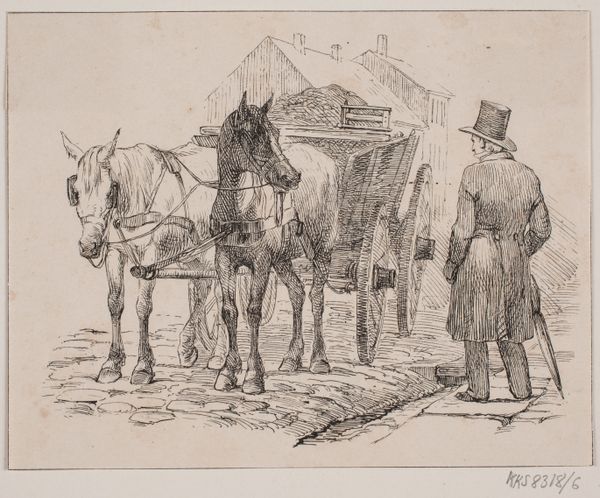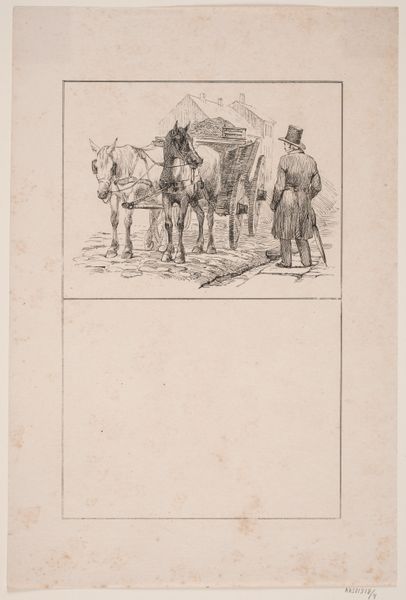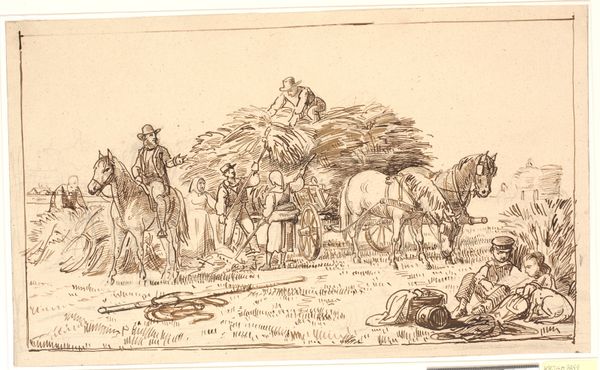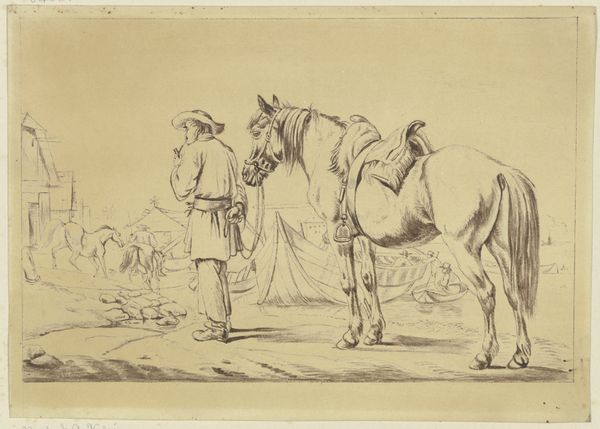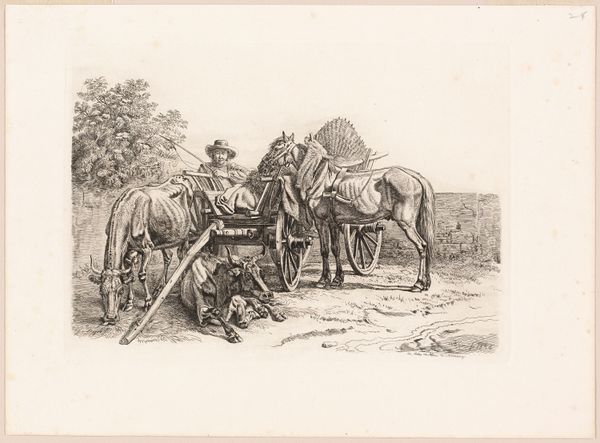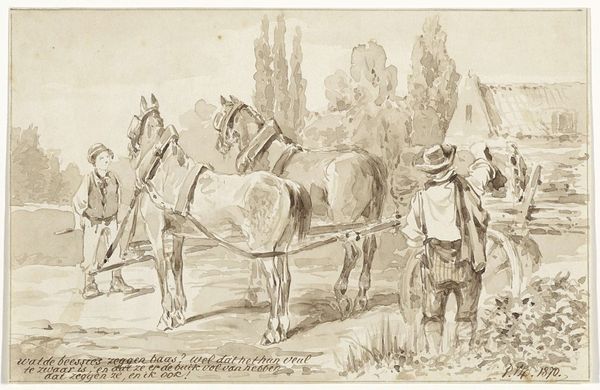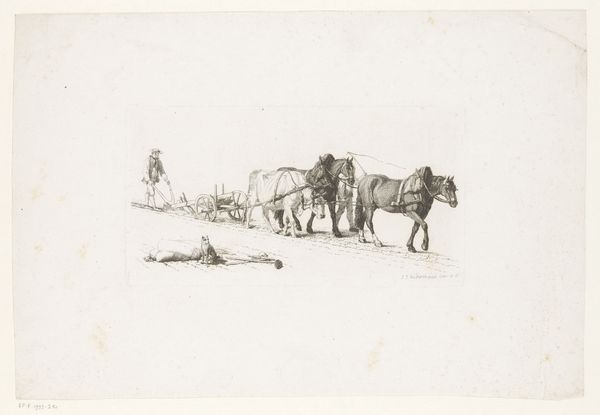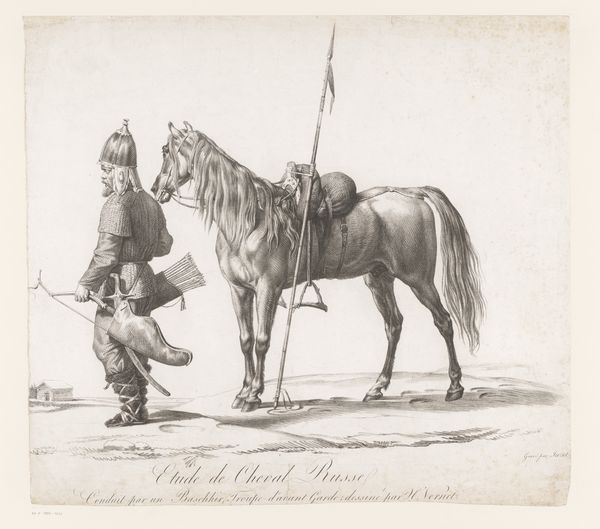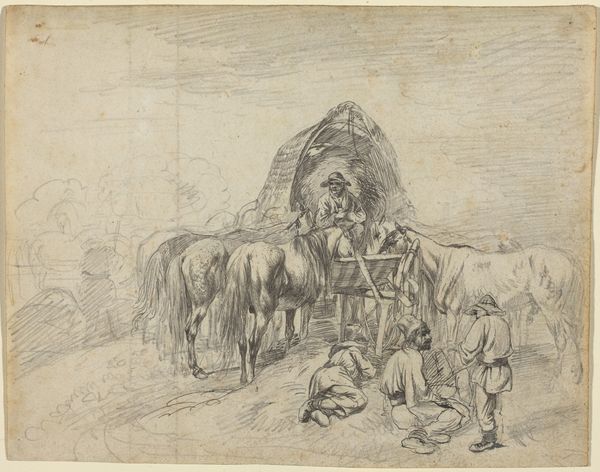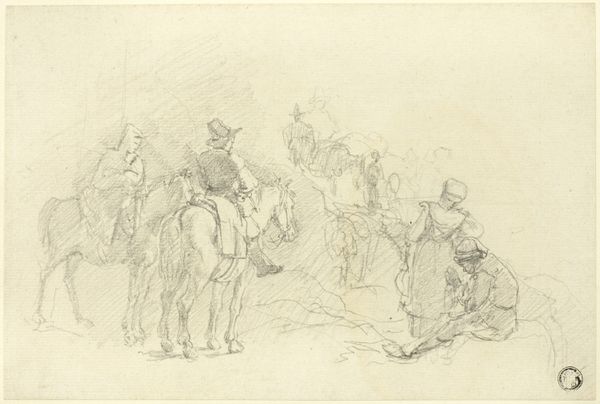
Skraldemandshesten. F.n.m.f. tegning af en skralde. Illustration til Kaalunds "Fabler for Børn". Se kommentar fra arkkatalog. 1843
0:00
0:00
drawing
#
drawing
#
landscape
#
figuration
#
romanticism
#
genre-painting
Dimensions: 111 mm (height) x 129 mm (width) (bladmaal)
Curator: Here we have Johan Thomas Lundbye’s 1843 drawing, "Skraldemandshesten," rendered in delicate strokes. Its primary medium appears to be ink on paper, currently held at the SMK. Editor: The initial impression is one of quiet industry; a mundane scene imbued with a certain reserved dignity. I am curious about the horses - they look so meek. Curator: The composition is noteworthy for its careful balance. See how Lundbye arranges the figures—the standing gentleman, the heavy cart, the weary horses. Each element is meticulously placed, contributing to a harmonious, if subdued, visual rhythm. Editor: It's the "skraldemand" isn't it? The 'garbage man' – and what horses symbolize. The presence of the gentleman and the horses pulls at the complex symbolism embedded within. Horses historically signify labor, nobility, and even freedom. But here, hitched to a garbage cart, there is perhaps a subtle commentary on the social hierarchies of labor. Curator: Perhaps. Or perhaps the emphasis falls less on explicit social critique and more on the exploration of form itself. Observe the intricate linework, how it defines the musculature of the horses and delineates the folds of the gentleman's coat. The details offer insight into Lundbye’s meticulous approach to representation. Editor: Yes, but these very lines tell us something! The slumped shoulders of the horses, the way their heads hang—they communicate exhaustion, a certain heaviness of spirit. I find this deeply human, if only projected. The cultural significance of horses often includes resilience – and it is hard to find that here. Curator: A convincing reading, I must admit. However, I am inclined to prioritize the purely formal attributes: line, tone, balance. To grant symbolic readings primary significance risks overlooking the artwork's inherent structure, its formal logic. Editor: It's not "either/or," though. The formal qualities certainly draw the eye in. But the symbols add layers, deepen our connection, and provide echoes from the cultural memory this artwork holds. Curator: Well, viewed in that light, the interaction does deepen my perspective, enriching a purely formal appreciation with intriguing interpretive possibilities. Editor: And recognizing structure invites viewers to engage actively in seeing these narratives.
Comments
No comments
Be the first to comment and join the conversation on the ultimate creative platform.
